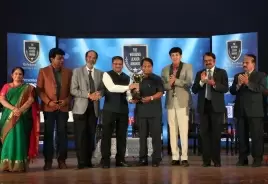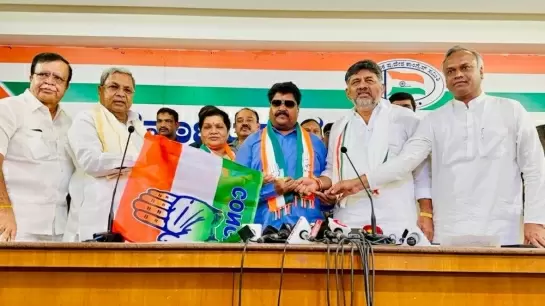Shakuntala Express chugs along the 113 km stretch at an average speed of 20 km per hour

18-June-2016
Vol 7 | Issue 25
At a time when Indian Railways is making plans to introduce high speed bullet trains in the country, Shakuntala Express, one of the last vestiges of the colonial era railways, continues to enthrall train lovers around the world.
The antique train with wooden coaches, running on India’s only private railway line between Murtazapur and Yavatmal in Maharashtra, chugs along the 113 km stretch at an average speed of 20 km per hour.
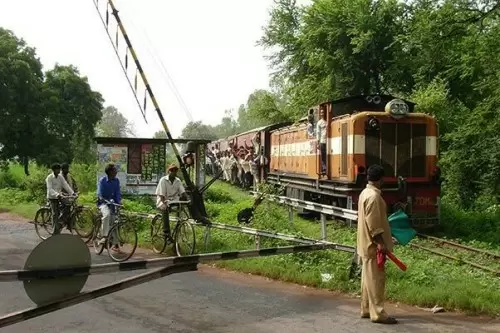 |
|
With cheap fares, Shakuntala Express is the lifeline for poor people residing in the villages between Murtazapur and Yavatmal
|
The journey time used to be four and a half hours. Now it takes double the time.
“Earlier the train would run at 30 km per hour. Now it runs at 20 km per hour and on the bridges the caution speed is 5 km per hour,” says P V Thakre, one of the loco pilots on the section.
Located in Bhusawal Division of the Indian Railways in Maharashtra, Central Provinces Railway Company (CPRC), a private firm owns the Murtazapur – Yavatmal (113 km) and the Murtazapur – Achalpur (76 km) railway tracks.
A passenger train runs on the Murtazapur – Achalpur route as well.
Arguably, these are the only trains in the country where the guards double up as ticket clerks, as there are no railway staff at most of the stations on the two routes.
The stations, in fact, can only be recognised by the yellow-black name boards on both sides of the platforms and the similar colour boundary grills barricading the landmass.
Over the years, since the tracks and the bridges (there are half a dozen large bridges on each section) have become rickety with age, the speed of the trains has reduced drastically and the termination of journey midway due to technical reasons has become very frequent.
“The trains break down at least twice a week”, says Thakre.
The two trains having three to four coaches each leave Murtazapur for Achalpur and Yavatmal in the morning every day. The Achalpur train returns to Murtazapur in the afternoon on the same day, while the Yavatmal passenger chugs back at night.
According to Thakre, while the bus from Murtazapur to Yavatmal takes just a few hours, it costs Rs. 150, six times more than the train fare. The trains, therefore, have become a lifeline for poor people residing in the villages between Murtazapur and Yavatmal and Murtazapur and Achalpur.
Recently, the two sections received relatively new diesel engines from Nagpur-Chhindwara line which is being converted into broad gauge.
British firm Killick-Nixon had laid the railway line for transporting cotton from Vidarbha to Manchester (England) through Mumbai. The Murtazapur-Yavatmal track was opened in 1903 while the Murtazapur-Achalpur stretch was commissioned in 1913.
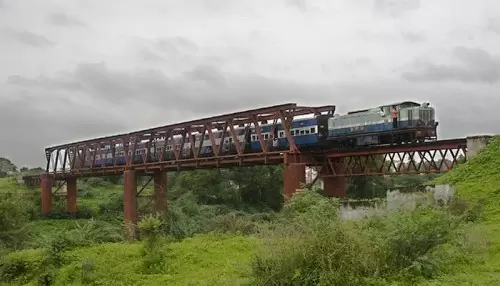 |
|
The trains move at a speed of 5 km per hour while crossing the bridges, which are in bad condition
|
Great Indian Peninsular Railway (GIPR) operated trains – passenger as well as goods - on the two sections in collaboration with the CPRC for many years. In fact, the CPRC in those days also owned other railway lines like Dhond-Baramati, Pulgaon-Arvi, Pachora-Jamner and Darwha-Pusad in Maharashtra.
The GIPR became a part of the Indian Railways in 1925. And when Jawaharlal Nehru’s government nationalised Indian Railway in 1951, most of the railway lines owned by the CPRC were either taken over and converted into broad gauge or wound up.
But the Murtazapur-Achalpur and the Murtazapur-Yavatmal sections remained with the CPRC as per a contract with the Indian Railways.
Central Railway which runs the trains on the two sections is supposed to pay royalty to its private partner and CPRC, which owns the lines is contracted to maintain them.
The contract between the Central Railway and CPRC has been renewed six times since Independence. In 1994, Bhusawal division replaced the steam engines with diesel locomotives to run the two trains which have operated for over a century.
However, Central Railway has not paid anything to the CPRC since 2002 when it says the latter stopped carrying out repairs on the century-old railway lines.
According to the contract signed in 1916, the Central Railway was supposed to pay 55 percent of its revenue as royalty to the CPRC annually and the latter was mandated to take care of the track maintenance.
Central Railway is now demanding Rs. 18.72 crores from the CPRC for major repair works. The latter, on the other hand, looks to hand over the lines to the former provided it is given Rs. 15 crore as final payment.
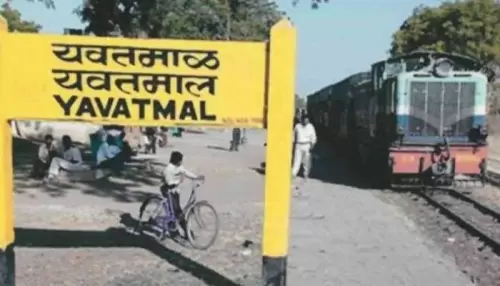 |
|
The railway line, the yellow-black nameboard, and the boundary grills of the same colour are the only signs that you are at a railway station
|
“Since 2002 Central Railway has not paid a single penny to the CPRC. If it pays us around Rs. 15 crores, we will hand over the railway lines to it”, says S R Himmady, Company Secretary of the CPRC, a company which took over the tracks from Killick-Nixon in 1910.
The company has not visited the tracks for at least three years and has not had a meeting with Central Railway officials for long for resolution of the dispute. It does not even have the gumption for a court battle. “We cannot fight a giant”, Himmady says.
Indian Railway is in the process of laying a new track between Yavatmal, Vardha and Nanded. 40 km of the new track would run parallel to Murtazapur-Yavatmal line of Shakuntala railway.
For Indian Railways, it would cost around Rs.1890 crore to convert the two sections into broad gauge. But there is hesitation in making the investment because the two sections run at a loss and do not even generate the income to pay the salaries of the railway staff working on the two sections.
According to Thakre, the Murtazapur-Yavatmal section generates less than Rs. 2,000 per day while Murtazapur-Achalpur section generates five times more than that.





